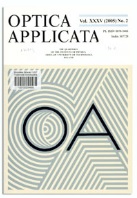The visual evoked potential technique makes it possible to explore the visual system with a high temporal resolution, thereby providing information about different phases of binocular integration. The aim of the study was to characterize the amplitude, latency and scalp distribution of pattern-reversal gratings visual evoked potentials related to binocular viewing. 12 adult participants without any pathology of the visual system were examined by electroencephalography (EEG), with three viewing conditions: the dominant eye, non-dominant eye, and both eyes. They were tested with reversed checkerboard patterns presented with a frequency of 1.02 Hz. The amplitudes of visual evoked potentials were calculated to detect the effect of binocular integration. The strongest binocular summation was observed on the N75 component. P100 component was also affected by binocular viewing, mainly above parieto-occipital cortex. In the later time window binocular summation was reflected in changes in amplitude of N145 component over the right parieto-occipital region. The obtained results suggest that binocular summation is not limited to occipital cortex as its influence was also observed above parieto-occipital regions. Changes in amplitude of N75 component looks to be a good predictor of binocular summation. © 2018 Wroclaw University of Science and Technology. All rights reserved

